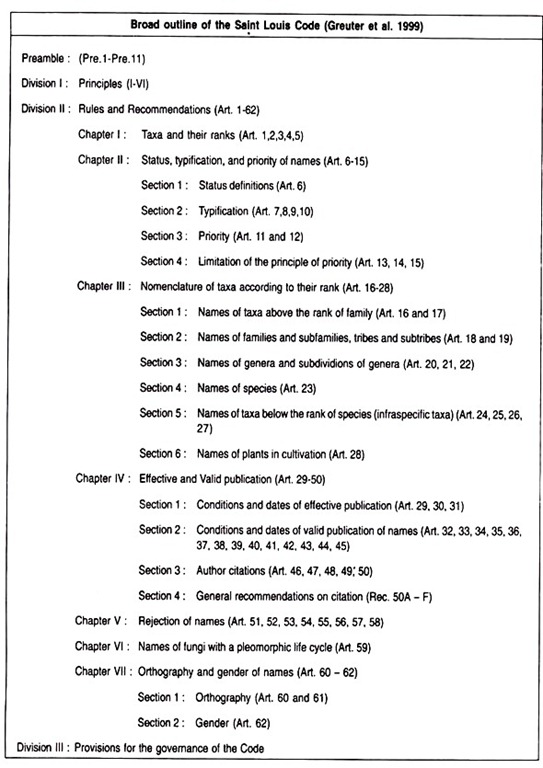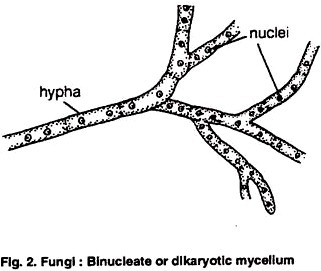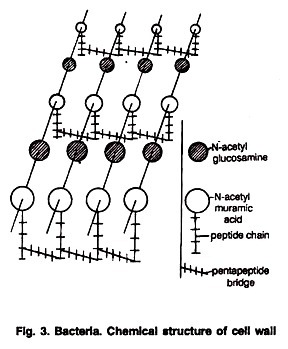ADVERTISEMENTS:
Evolution and Classification of Organism on Earth!
The classification of organisms into a hierarchy of groups, namely, kingdoms, phyla (or divisions), classes, orders, families, genera and species, is based on their similarities and differences.
For example, the genus Ram of frogs has several species like clamitans, catesbeiana, Tigrigna, etc.
ADVERTISEMENTS:
Although they belong to the same genus, they show subtle variations. Similarities suggest that some similar characters are present in the groups. These characters must have come from common genes, which in turn have come from a common ancestor. To interpret similarities and differences between groups on the basis of their evolution we go down the hierarchy of classification.
Classification shows how closely organisms are related with respect to evolution. It is based on the assumption that each organism has descended from its ancestral type with some modification.
There is a hierarchy of characteristics that helped taxonomists to form classification groups. For example, the first level of classification depends on whether the cell has a nucleus or not. Except the members of the kingdom Monera (e.g., bacteria) all other organisms have a true, or well-organized, nucleus.
ADVERTISEMENTS:
The next level of classification depends on whether the nucleated organisms are unicellular or multicellular. The basis for classifying the multicellular organisms is whether they are capable of photosynthesis or not.
The basis for classifying no photosynthetic organisms is the presence or absence of the vertebral column in the body. In this way, organisms can be arranged in groups based on their physiological, biochemical, anatomical or evolutionary relationships.
Tracing evolutionary relationships:
In order to find out the evolutionary relationships among organisms, we have to look for their common features. Different organisms would have common features if they are inherited from a common ancestor.
Comparative anatomy:
The study of body parts of animals of a particular group shows how apparently dissimilar animals have quite similar anatomical structures. For example, the forelimbs of man, cat, whale and bat are made up of the same skeletal elements. They have been modified to suit the environmental conditions in which these animals live.
These organs are functionally dissimilar but structurally similar. Such organs are called homologous organs. The anatomical similarity points to the existence of a common ancestor from which these organisms have evolved. However, though the wings of a bat and the wings of a bird look similar, they are anatomically dissimilar. Such organs are called analogous organs.
Comparative embryology:
A comparative study of the stages of the embryonic development of animals reveals that in their early stages they were very similar. These embryonic stages reflect their ancestry. The embryological stages of an organism give us an idea about the stages of its evolution.
For example, when we study the human embryo, we find that at a certain stage it has gills. This suggests that fish is one of the earliest ancestors in the evolution of mammals including human beings.
Fossils:
Fossils are the remains or traces of organisms that lived in the past. Usually the hard parts of organisms (e.g., bones, shells and teeth) turn to stone like fossils. Sometimes fossils also include remains like skeletons, the preserved impressions of tracks left by organisms on rocks, and so on. Fossil records are a proof of the changes in and the relationships between various groups of organisms. Paleontology is the study of fossils.
ADVERTISEMENTS:
A comparison of fossils and present-day organisms gives the evidence of evolution. It shows how one species gives rise to another species with certain modifications. Paleontologists have found the fossils of dinosaurs that lived in the Jurassic period (about 200 million years ago). These have some features similar to the reptiles present today.
The fossil records of the animal Archaeopteryx that lived about 150 million years ago show that it had some features like birds (e.g., feathers) and some features like reptiles (e.g., claws on wings, and a bony tail). This supports the hypothesis that birds evolved from reptiles.
How are fossils studied?
Fossils are found in sedimentary rock. This type of rock is formed by the slow deposition and hardening of sand, stones, clay, etc., over a period of time. The lower layers of the rock are older, while the upper layers are recent. We usually use two ways for dating fossils. One way is to assume that animals that lived and died in recent. Years would be found buried in the top layers of soil.
ADVERTISEMENTS:
For example, fossils of horse like animals would be exposed on digging these layers. As we dig deeper, we will find older fossils. We may, for example, find fossils of dinosaurs. Fossils found in the bottom layers are the oldest. These may be fossils of invertebrates that lived in very ancient times.
The second way of detecting the age of a fossil is by finding out the age of the various layers of rock. This is determined by radiocarbon dating. We can calculate the age of a fossil by finding the ratios of different isotopes of the same element in the fossil material.
Evolution Is a Gradual Process:
Evolution is a gradual process—no organism evolved suddenly. Complex organs evolved in organisms gradually over generations. But what would have been the advantage of the incipient (primitive) organs evolved in the early stages of evolution?
How was each intermediate stage selected during its evolution? For example, how did our eye evolve to its present complex form? And, why were its incipient forms (e.g., eyespots in Planarian) selected by nature? Again, wings in birds are an important adaptation for flight.
ADVERTISEMENTS:
But the featherlike structures initially formed in primitive birds would have had no advantage in flying. Then why did nature select the early feathers? The answer to these questions is that these features would have had some marginal advantages like providing insulation against cold and hence they were selected by nature.
Artificial selection also plays an important role in creating diversity, as the following example shows. Humans have cultivated the wild cabbage plant for thousands of years. By carefully examining variations in these cabbage plants, crossing them and artificially selecting their traits, they got a variety of plants like cauliflower, broccoli, kohlrabi and kale.
Thus, through artificial selection, all these different-looking plants were developed from the same ancestor. In nature too, structures that look very dissimilar have evolved from a common ancestral design.
A study of comparative anatomy and fossils suggests that although the wings of a bat, the flippers of a whale, and the arms of a man look different, they are anatomically quite similar. Comparing the DNA of different species can directly show us how much the DNA has changed during the evolution of these species.
Evolution is not necessarily progressive:
We can compare the evolution of different species by studying their evolutionary family tree. In the evolutionary family tree of species, many branches (species) can arise at any stage of evolution. A species may not be eliminated for a new species to emerge from it. Are the new species better than the older ones? Evolution does not always mean that the newly evolved forms are better than those that existed in the past. Evolution simply means the generation of diversity and selection by nature.
Natural selection and genetic drift lead to the formation of a population that cannot breed with the original one any more, as in case of the evolution of humans and chimpanzees from a common ancestor.
Scientists have suggested that chimpanzees are our nearest evolutionary cousins. About 99 per cent of our 25,000-odd genes are identical to those of chimpanzees. Scientists have discovered our genetic differences with chimpanzees recently.
A gene-by-gene comparison shows that these genetic differences are relatively subtle. But even a difference of one per cent would mean 250 possible mutations.
A single change in the DNA bases can produce a dramatic change, so 250 mutations will bring about many variations. Humans are very different from chimpanzees and have not evolved from chimpanzees. Rather, humans and chimpanzees evolved from a common ancestor, and each had a separate course of growth and adaptation.
In evolution, the new forms evolved are more complex than their ancestors. It is the adaptability of a species to the environment that supports its survival, not the complexity of the species. Had it not been the case, simpler forms would not have been living today. For example, bacteria are very simple in form, yet they are surviving today.
ADVERTISEMENTS:
They are found in hot springs, in deep-sea thermal vents, and in ice sheets. This is because of their adaptability to the changing environment. Each species, whether complex or simple, is subject to natural selection.
Each species has to go through the process of natural selection to survive and reproduce. In evolutionary terms, we cannot say that a particular species has a better design than another. Each species is well suited and adapted to its environment and hence is good enough to live and reproduce.
Molecular phylogeny:
The ancestors of different organisms, including humans, can be traced by studying the changes in their DNA. A change in the DNA means a change in its protein sequence. The ancestry, or phylogeny, determined by a comparative study of DNA sequences is called molecular phylogeny.
How do we trace a human being’s ancestry by studying DNA sequences? Mutation means any change in the bases of DNA. It occurs when there is any duplication of bases, inversion of bases, deletion of bases, addition of bases, and/or substitution of one base with another. The study of these mutations and the pattern of their inheritance allow us to find out how closely one species is related to another and how and when one form diverged from another.
The number of mutations in a particular gene over a period of time enables us to calculate how far back in time one species diverged from another. This is because mutations would accumulate over generations. These mutations can be traced backwards in time to find out at which stage each species diverged from another. The more distantly related the organisms are, the greater is the difference in their DNA.
ADVERTISEMENTS:
ADVERTISEMENTS:
In order to trace the ancestry from the fossil of an organism, its DNA is first obtained. Even one drop of frozen (or preserved) blood is enough to get DNA for the purpose.
The sequence of this DNA is determined. A large number of fossils are collected from different geological periods and from different regions. The specific DNA sequence of each is determined and compared with the others.
The comparative study enables us to find out what the original sequence was, when it underwent a change, in which form the change was passed down, and so on. In this way we can go back in time and determine the ancestor of an organism.
Studies in molecular phylogeny help in the classification of organisms.
Human migration:
A mutation in a person’s DNA is passed down to all the descendants of that person. This means that if the same mutation is present in two individuals, both of them share the same ancestor. These mutations can be hidden when the genes are all mixed up during the formation of gametes and zygote.
However, the DNA in mitochondria is passed down intact from mother to child. Moreover, the Y chromosome, which determines maleness, is also passed down intact from father to son.
Therefore, by comparing the mutations in mitochondrial DNA and Y chromosomes of individuals all over the world, we can trace when and where those people parted and migrated around the world.
A study of the changes in the DNA of human beings from all over the world and a study of human fossils scattered all over the globe have suggested that the first human beings originated in Africa. The earliest fossils of modem humans were found in Ethiopia in Africa.
These humans were hunters. They lived about 200,000 years ago. Some of them left Africa and migrated to West Asia. From there they migrated to Central Asia, South Asia and East Asia.
One group of their descendants migrated down to the islands of Indonesia and to the Philippines and Australia, while another group travelled to Europe. Another group migrated to northern Asia, while yet another group went to North America and onward to South America.
These early humans migrated in all directions and mixed with one another. Scientists have come to this conclusion by studying human DNA sequences and Y chromosomes, and by analysing the mutations that occurred in humans over a period of time.
Today, you can give your blood to a laboratory and get your ancestry traced. You can also find out in which part of the world your ancestors lived. All this is possible by studying the chromosome and mitochondrial DNA.
For example, the earliest known mutation spread outside Africa with the migration of humans some 50,000 years ago. If the Y chromosome of an American contains this particular mutation along with various other mutations, it proves his African ancestry. Thus genetic mutations act as markers, tracing ancestry through time.
All human beings of the world, whether they are African or American, share the same gene pool and hence all modem humans belong to the same species—Homo sapiens. There are, however, a large number of genes in the gene pool that serve as the source of individual variations.
It is for this reason that no two individuals are identical in looks, abilities, behaviour, etc. Therefore, there is great diversity in human features such as skin colour, height, hair colour, and so on. But there is no biological basis for assuming that humans with different features belong to different races.




